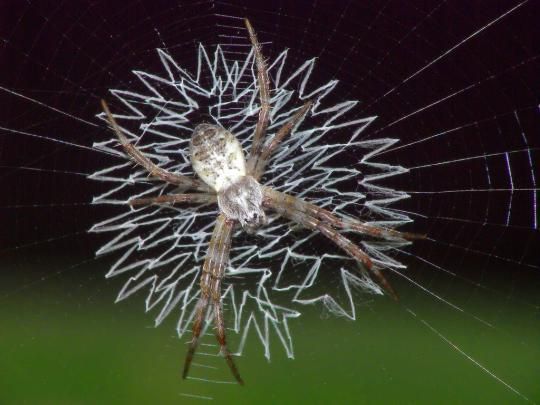|
|
Spider Web
|
Although all arthropods use muscles attached to the inside of the exoskeleton to flex their limbs, spiders and a few other groups still use hydraulic pressure to extend them, a system inherited from their pre-arthropod ancestors. As a result a spider with a punctured cephalothorax cannot extend its legs, and the legs of dead spiders curl up. Spiders can generate pressures up to eight times their resting level to extend their legs, and jumping spiders can jump up to 50 times their own length by suddenly increasing the blood pressure in the third or fourth pair of legs.
Most spiders that hunt actively, rather than relying on webs, have dense tufts of fine hairs between the paired claws at the tips of their legs. These tufts, known as scopulae, consist of bristles whose ends are split into as many as 1,000 branches, and enable spiders with scopulae to walk up vertical glass and upside down on ceilings. It appears that scopulae get their grip from contact with extremely thin layers of water on surfaces. Spiders, like most other arachnids, keep at least four legs on the surface while walking or running.
• Silk production
The abdomen has no appendages except those that have been modified to form one to four (usually three) pairs of short, movable spinnerets, which emit silk. Each spinneret has many spigots, each of which is connected to one silk gland. There are at least six types of silk gland, each producing a different type of silk.
|
|









